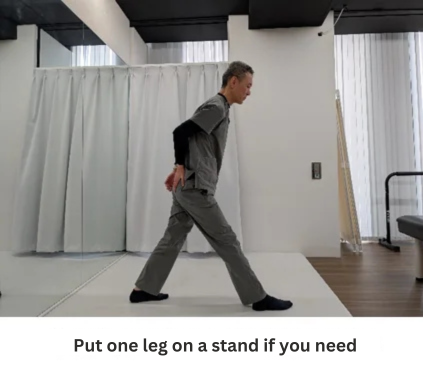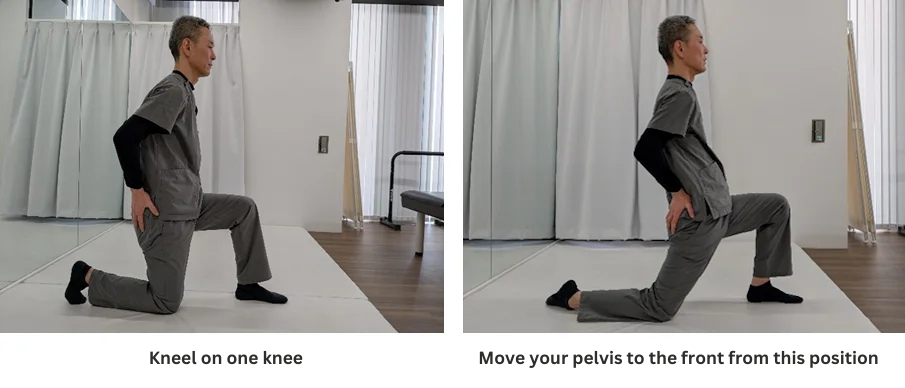Column Back Pain and Physical Inactivity: How Moderate Exercise can Keep You Healthy
February, 7, 2025
Insufficient physical activity is one of the most common causes of lower back pain.
If you suffer from back pain and feel that you have not been exercising enough lately, taking appropriate measures such as walking, stretching, and doing muscle training can help offset the lack of exercise as well as prevent back pain.
In this article, we will examine the relationship between lack of exercise and back pain, and introduce some daily exercises that can be incorporated into your daily routine to counteract the effects of lack of exercise.
What causes back pain? Can lack of exercise also be a cause of back pain?
There can be several causes to back pain. That is why a doctor’s examination is necessary to determine the specific cause.
But among all these causes, lack of exercise is considered to be the most common.
Insufficient physical activity
When you are not exercising enough, the muscles around your lower back will start to grow thinner. Simply put, your strength levels will decrease. At the same time, your flexibility will also be affected. As muscle strength decreases and the ability to hold the spine upright declines, the strain on the spine will increase, in turn leading to pain.
In addition, if muscles become stiff, adequate blood flow is impaired and waste products will build up, eventually leading to lower back pain.
Posture
People often complain that they have bad posture, but regardless of whether you have good or bad posture, always maintaining the same posture over time will put strain on the lower back.
When we stay in the same posture for a prolonged period of time, our muscles lose their mobility and tend to become stiff. Once this sets in, joint movement diminishes. The loss of joint movement increases mechanical stress, which further aggravates back pain. It is better to move whenever possible, as moderate physical activity will help relax the muscles and joints.
Stress
Persistent mental stress activates the sympathetic nervous system, which causes tension in the muscles. In addition to psychological stress, environmental stress can also cause back pain. When exposed to the cold winter weather, the body tends to contract and muscles become more rigid, which can lead to increased tightness. For some people, the pain disappears as soon as the psychological stress is lifted.
Spinal canal stenosis
A high percentage of patients who develop back pain as they get older are found to have spinal canal stenosis by their consulting doctor. The joints of the spine become deformed and protrudes, putting pressure on the nerve pathways. When the nerves are compressed, motor and sensory paralysis may accompany the condition.
Decline of the stregth of the muscles around the lower back
The vertebral column forms a gentle S-shaped curve from the neck to the lower back. This curve supports the human head, which weighs approximately 5 kg (about the size of a bowling ball). Lack of exercise causes the muscles around the waist to weaken and become less flexible. This leads to an imbalance in the entire spinal column and lumbar vertebrae, which places excessive strain on the muscles around the lower back and causes lower back pain.
Strain on the lower back caused by obesity
Continued physical inactivity increases the likelihood of obesity. As the body becomes heavier, the abdomen also becomes more prominent. The weight of the abdomen increases the strain on the lower back in the direction towards which it is leaning. This mechanical stress can also be a cause of lower back pain.
The importance of moderate exercise
The aforementioned causes of back pain, however, are connected to joint kinetic chain disruption in a high percentage of cases.
Incorporating moderate exercise into one’s daily routine can alleviate pain, relieve stress, and help one get a good night’s sleep, thereby contributing to maintain one’s physical and mental health.
Conversely, in the absence of any exercise routine, stress is not released and the body fail to detect fatigue, making it difficult to get a good night’s sleep. Stress can also lower the functions of the part of the brain in charge of suppressing pain, in turn exacerbating the amount of pain felt.
Recommended exercises for lower back pain
Suddenly engaging in strenuous exercise after a period of inactivity is not recommended and can instead lead to further back pain. It is also not advisable to exercise too hard when you are in physical pain.
We recommend that you start with exercises that are easy to perform and into which you can gradually incorporate a small increase in resistance. This will make it easier to maintain the activity in the long term.
Walking
Even people who walk on a regular basis can suffer from back pain, but the most important thing is the way you walk. For instance, walking at a leisurely pace is not very effective. Instead, bend your elbows, swing back and forth widely, and keep your stomach tight to prevent your lower back from curving. Legs should be calculatedly widened into a broad stride. Walking with the image of stimulating all the muscles in your body in a balanced manner is effective in alleviating back pain that has been induced by lack of exercise.
Training of the abdominal muscles
The abdominal muscles must be engaged to properly balance the body and remedy an overly-arched back. The strength in the abdominal muscles is important when you want to reduce the strain on the lumbar spine. Once the pelvis is able to move back and forth more flexibly, the muscles will become more flexible again.
Be careful not to perform abdominal exercises that lift the upper body in the conventional manner, as this may exacerbate lower back pain.
1. Make sure that your lower back is raised when you lie down on your back.
2. Move your pelvis as if you were trying to narrow the gap.
*If you are able to fill the gap in the lower back without difficulty, move on to the next exercise.
3. While lying on your back, bend both legs and lift them up. Support yourself with both hands on either side of your body. If you can lift your hips and lower back until your hips are lifted, then you are fine.

Hamstrings stretch
When the hamstrings become unable to flex, the pelvis will tend to tilt backward and the hips will arch, makes it very difficult to raise one’s pelvis.
1. Extend one leg out straight.
2. Stand with the pelvis erect and lean in the direction of the outstretched leg.
3. Switch sides and repeat the movement.
When fully stretched, you should feel a pulling sensation at the back of your thighs.

Stretch of the iliopsoas muscles
The iliopsoas muscles are in charge of lifting the hip joints. Their function is to tilt the pelvis forward. Stretching the iliopsoas muscles increase flexibility around the hip joints and promote blood flow to the muscles around the waist. This can yield good results because back pain may be caused by impaired blood flow.
1. Spread your legs apart and kneel on the leg behind you.
2. Place both hands on the knee of the leg in front of you and lean your upper body forward.
3. Slowly return to the original position.
4. Switch the front and back legs and perform the same movement.

All these stretching movements can be performed in as short as 10 seconds. Do them 3 times on each side. Do this in the morning, at noon, and in the evening every day.
If you suffer from back pain and feel you are not exercising enough, it is a good idea to gradually incorporate some of these exercises into your daily routine. Do it at a pace that is sustainable, and you will soon be reacquainted with your older self once again.
If you are suffering from back pain, please consider a consultation at our clinic.
Related Articles
Low Back Pain and Posture: Reducing Pain by Adopting the Correct Posture
A Must Read for Patients with Back Pain on How to Choose the Right Bedding and Mattress
Are Hot Springs Really That Good For Back Pain? The Effects and Benefits of Hot Spring Spas
Causes and Prevention of Back Pain: A Guide for Patients Over 60s



